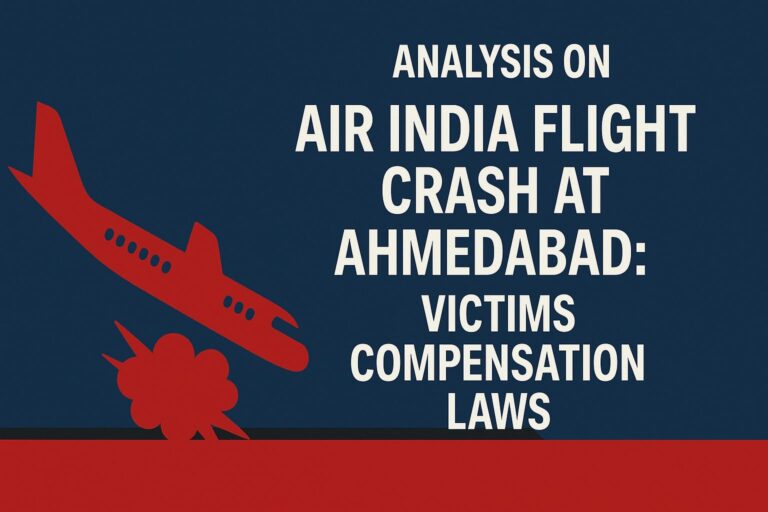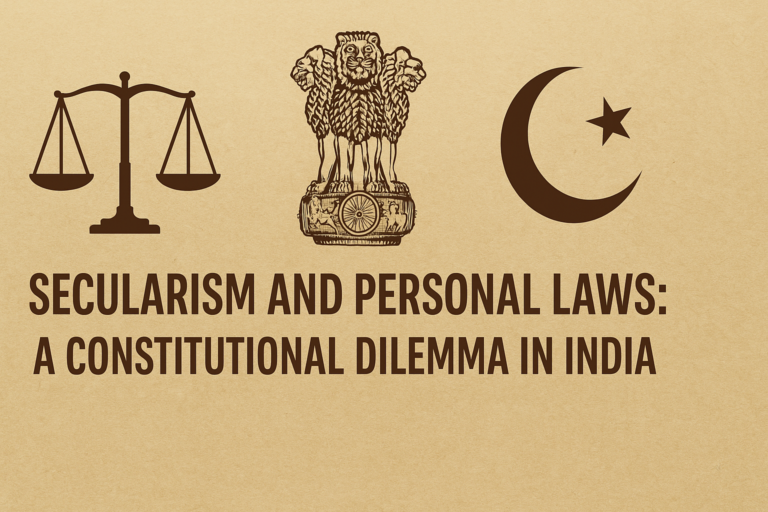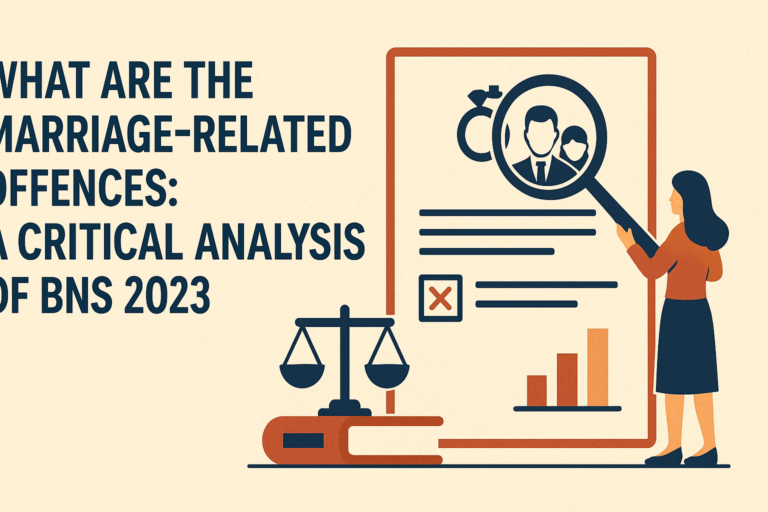
Jayalakshmi K. Author
Jayalakshmi K. has completed her B.Sc. Computer science and graduated with an LLB from Tamil Nadu Dr. Ambedkar Law University in Chennai, Read More

Abstract
The article which describes about jurisdiction and how it is determined in civil and criminal court. Let’s have a practical example as A person had committed a domestic violence against his wife, she had came to her mother home and she is likely to lodge a case against her husband, at this situation where will be a right jurisdiction for her to file a case to get a proper trial is decided based upon the act only. So like this every case as jurisdiction, first need to be analyze to lodge a case at right place without any delay. In this article the jurisdiction classification, hierarchy had been given in detail.
Introduction
Jurisdiction[1] is derived from two Latin terms: juris (law) and dictio (to speak). Essentially, jurisdiction answers the question of which forum has the authority “to speak the law.” According to Black’s Law Dictionary, jurisdiction is defined as “A court’s power to decide a case or issue a decree.” The purpose of the concept of jurisdiction is to ensure that a court has the authority to hear and decide only those cases that are connected to it or fall within its territorial.
Jurisdiction in Civil Procedure Code
The Code of Civil Procedure, 1908 (CPC) establishes the legal framework for deciding the jurisdiction of civil cases in India. Jurisdiction determines which court is authorized to hear a particular case based on specific parameters , including geography, subject matter, and monetary value. This ensures fairness, avoids confusion, and promotes judicial efficiency.
Jurisdiction Classification
-
Subject-Matter Jurisdiction
Section 9 and 20 of CPC speaks about Subject matter jurisdiction. It relates to the authority of a court to handle specific types of cases based on the nature of the dispute. Some courts are designated to hear only certain types of cases (e.g., family disputes, labor disputes).
-
Pecuniary Jurisdiction
It defines monetary value of the subject matter of the suit. Different courts are assigned specific limits for handling cases based on the value of the claim. Under section 6 of CPC mentioned this jurisdiction.
Illustration: If a person sues another for non-payment of ₹1.5 lakh, the case would typically be filed in a court that handles cases under ₹3 lakh. Filing it in a higher court would lead to rejection due to lack of jurisdiction.
-
Territorial Jurisdiction
Territorial jurisdiction clarifies the geographical area within which a court can had a power to proceed. According to Sections 16 to 20 of the CPC, territorial jurisdiction depends.
-
Original and Appellate Jurisdiction
Original jurisdiction of a court refers to cases where the court is the first to be approached for adjudication. In exercising its original jurisdiction, the court of first instance addresses matters such as suits, petitions, and applications. Additionally,under Article 32, the Supreme Court shares concurrent jurisdiction with High Courts for enforcing Fundamental Rights through five types of writs: mandamus, habeas corpus, quo warranto, prohibition, andcertiorari. High Courts also handle civil and criminal appeals from subordinate courts under their jurisdiction.
Appellate jurisdiction, a court’s official to review or reconsider cases already decided by lower courts through appeals or revisions. Both the High Courts and the Supreme Court possess appellate jurisdiction to address matters brought before them in the form of appeals.
-
Special Jurisdiction
Certain cases are excluded from the jurisdiction of regular civil courts and are heard by specialized courts. This ensures that experts in specific fields handle cases of technical nature.
Examples :
- Disputes related to labor laws are heard by Labor Courts.
- Consumer complaints are handled by Consumer Commissions.
- Intellectual property cases are heard by Intellectual Property Appellate Hirerachy.
Hirerachy
Civil Judges (Junior Division)[2]
-Original Jurisdiction
- Deals with simple civil disputes such as rent, small property disputes, and contract cases.
- Limited Powers
- Cannot entertain cases above a certain monetary limit, as prescribed by law.
- Low-value civil cases (typically up to ₹5,00,000 or as prescribed by state law).
– Examples:
– A rent dispute involving ₹1,00,000.
Civil Judges (Senior Division)
- Subordinate to District Courts, higher in rank than Junior Division judges.
- Deals with civil disputes involving moderate pecuniary value.
- Can handle cases referred by District Judges.
- Special Powers:
- Moderate-value civil cases as defined by the state (e.g., ₹5,00,000 to ₹20,00,000).
- May act as an appellate authority for cases decided by Civil Judges (Junior Division).
– Examples:
– A property dispute involving ₹10,00,000.
– A civil suit for breach of contract with damages worth ₹15,00,000.
District Courts
- Original jurisdictioon : Handles civil cases with high pecuniary value as prescribed by the state government.
- Appellate Jurisdiction
- Hears appeals from decisions of subordinate courts (Civil Judges – Senior and Junior Division).
- Divorce cases and other family law matters (where Family Courts are not established).
- Appeals against decisions of subordinate courts (Civil Judges – Senior and Junior Division).
- Appeals in Rent Control Act cases or municipal tax disputes.
-Examples:
– A civil suit involving ₹50,00,000.
High Courts
- Appeals from District Courts and other subordinate courts in civil matters.
- Original Jurisdiction:
- Limited original jurisdiction in civil cases like matrimonial disputes, company law matters, and certain writ petitions.
- Supervisory Jurisdiction:
- Supervises the functioning of subordinate courts under Article 227.
- Can issue writs under Article 226 for the enforcement of legal and constitutional rights.
Supreme Court of India
- Constitutional Jurisdiction.
- Can grant leave to appeal in cases involving substantial legal questions.
- Appeals against decisions from High Courts in civil cases under:
- Article 133 (substantial question of law or significant value involved).
- Article 136 (Special Leave to Appeal).
- Appeals from tribunals if the law allows.
-Example
– A constitutional dispute between two states regarding the sharing of river waters.
Hierarchy of Appeals
- Civil Judge (Junior Division): Appeals to the District Court.
- Civil Judge (Senior Division): Appeals to the District Court.
- District Court: Appeals to the High Court.
- High Court: Appeals to the Supreme Court.
Case Law
In the case of New Moga Transport Company v. United India Insurance Co. Ltd. and Others, the Respondent had purchased goods that were booked for transportation to Barnala. Upon arrival at Barnala, a fire, reportedly caused by an electrical short circuit, destroyed the entire consignment. A claim for the resulting loss was filed against the defendant. In the legal proceedings, the Appellant specifically contended that the Barnala court lacked jurisdiction to hear the case. Referring to the consignment note, it was argued that jurisdiction was exclusively vested in the court at Udaipur, as explicitly stated in the document.
Jurisdiction in Criminal Procedure Code
In criminal law, jurisdiction is the legal authority granted to a court to hear and decide matters involving offences. This authority is determined by factors such as the geographical location of the offence, the nature of the crime, and the hierarchy of courts. Jurisdiction ensures that cases are adjudicated efficiently, protecting the rights of both victims and accused individuals while upholding public confidence in the justice system.
Under the BNSS, jurisdiction is categorized into various types,
Types of Jurisdiction[3] in Criminal Cases Under BNSS
-
Territorial Jurisdiction
- It defines the geographical boundaries within which a court can exercise its authority. The BNSS adheres to the principle that cases should be tried where the offence occurred.
- Section 177 of the BNSS states that offences must ordinarily be tried by a court within whose local jurisdiction the crime was committed.
- Exceptions for Multiple Locations: Sections 178 to 181 provide flexibility for offences involving multiple jurisdictions. For example:
- If a crime is committed across multiple locations, any court with jurisdiction over one of those areas may try the case.
- Crimes involving transportation (e.g., offences on a train or aircraft) can be tried at the place where the vehicle first stopped or passed through.
- This ensures that cases with complex geographical dimensions are efficiently adjudicated.
-
Subject-Matter Jurisdiction
- Subject-matter jurisdiction refers to the authority of a court to try specific types of offences based on their gravity and classification. The BNSS designates courts based on the nature of the offence:
- Magistrate Courts: Handle less severe offences, such as defamation or public nuisance, which carry lighter punishments.
- Sessions Courts: Deal with heinous crimes such as murder, rape, and terrorism, which require more specialized handling.
- Special Courts: Certain offences, such as those under anti-terrorism laws, anti-corruption statutes, or cybercrime laws, are assigned to specialized courts for greater expertise and efficiency.
-
Pecuniary Jurisdiction
- While primarily relevant in civil cases, pecuniary jurisdiction under the BNSS may apply in situations where financial penalties or fines form a critical aspect of the offence. Courts are empowered to handle cases where the quantum of fines aligns with their designated financial competence.
-
Personal Jurisdiction
- Under the BNSS, any person, irrespective of nationality, can be tried if they commit an offence within India’s territorial boundaries. Additionally, Indian courts have jurisdiction over Indian citizens committing offences abroad, provided the act violates Indian law and aligns with international treaties.
-
Original and Appellate Jurisdiction
- Original Jurisdiction: Courts with original jurisdiction, such as Magistrate Courts or Sessions Courts, hear cases at the first instance.
- Appellate Jurisdiction: Higher courts, including the High Courts and Supreme Court, have the authority to review decisions made by lower courts. Appellate jurisdiction ensures a check-and-balance mechanism within the judiciary.
Classification of courts
Supreme Court of India
- It is the highest appellate court in India. It hears appeals from the High Courts, especially in cases involving significant legal questions, constitutional issues, or serious offenses.
- Jurisdiction: It has jurisdiction over all courts in India. It can review criminal cases and challenge decisions made by the High Court or Sessions Courts, especially those concerning the death penalty, life imprisonment, or constitutional rights.
- Case: Suppose a person is convicted and sentenced to death for murder in a Sessions Court. The accused appeals to the High Court, but the High Court upholds the conviction. The accused can then appeal to the Supreme Court.
- Outcome: The Supreme Court will review the case, assess whether the death penalty is warranted, and either confirm, reduce, or overturn the conviction.
High Courts
- The High Courts are the highest judicial bodies within each state or union territory. They hear appeals, revisions, and references from the lower courts, including Sessions Courts and Magistrate Courts.
- Jurisdiction: High Courts have appellate jurisdiction over the lower courts in their jurisdiction. They can hear criminal appeals, review the decisions of lower courts, issue writs, and supervise the functioning of subordinate courts.
- Case: A person is convicted by a Sessions Court for a serious offense like rape. The accused is sentenced to life imprisonment. The defense lawyer believes that the trial was unfair and files an appeal in the High Court.
- Outcome: The High Court will examine the case, review evidence, and may reduce or enhance the sentence or order a retrial if it finds irregularities in the original trial process.
Sessions Court
- The Sessions Court is the highest trial court in a district. It handles serious criminal cases, such as murder, rape, dacoity, and other offenses that are punishable by death, life imprisonment, or long-term imprisonment.
- Jurisdiction: It has jurisdiction over serious offenses and can impose severe sentences, including the death penalty, but such sentences require confirmation by the High Court.
- Case: A person is charged with murder under Section 302 of the Indian Penal Code (IPC). The case is tried in the Sessions Court due to the seriousness of the offense.
- Outcome: The Sessions Court may conduct a full trial, consider the evidence, and if found guilty, convict the accused and impose the death penalty or life imprisonment. The judgment can be appealed in the High Court.
Chief Judicial Magistrate (CJM) / Chief Metropolitan Magistrate (CMM)
- The Chief Judicial Magistrate or Chief Metropolitan Magistrate oversees the functioning of all Magistrate Courts in a district. This court deals with offenses that carry a punishment of up to 7 years of imprisonment, and it handles both criminal trials and administrative responsibilities.
- Jurisdiction: These magistrates hear cases related to offenses such as assault, theft, cheating, and other lesser crimes. They can also supervise the activities of subordinate magistrates.
- Case: A person is accused of theft (Section 378 IPC), where the maximum sentence is 3 years. The case is filed in the district’s Chief Judicial Magistrate’s court.
- Outcome: The accused may receive a sentence up to the statutory limit of 3 years.
Judicial Magistrate of First Class (JMFC)
- Judicial Magistrates of First Class handle criminal cases with relatively lesser punishment. They deal with offenses that carry a punishment of up to 3 years of imprisonment or a fine.
- Jurisdiction: This court typically handles offenses such as minor assaults, harassment, and property offense.
- Case: A person is accused of simple assault (Section 323 IPC), where the punishment is up to 3 years of imprisonment or a fine. The case is handled by the Judicial Magistrate of First Class.
- Outcome: The JMFC conducts the trial and may convict the accused based on evidence, sentencing them to imprisonment for up to 3 years or imposing a fine.
Judicial Magistrate of Second Class
- Judicial Magistrates of Second Class handle less serious offenses that carry a punishment of up to 1 year of imprisonment or a fine.
- Jurisdiction: These cases involve minor criminal offenses, such as public nuisance, minor thefts, and small-scale assault.
- Case: A person is charged with causing a public nuisance under Section 290 of the IPC, which carries a punishment of a fine or imprisonment up to 6 months. The case is heard by a Judicial Magistrate of Second Class.
- Outcome: The JM of Second Class will review the case, and if the accused is found guilty, the court will impose a fine or a short-term sentence.
Executive Magistrates
- Executive Magistrates are primarily responsible for maintaining public order and safety. They deal with preventive actions, such as issuing orders under Section 144 (unlawful assembly), and handle non-criminal matters that could lead to disturbances.
- Jurisdiction: Executive Magistrates do not conduct criminal trials but play a crucial role in preventing offenses and managing emergencies. They can also pass orders to maintain public peace.
- Case: In a case of an impending riot, an Executive Magistrate might issue an order under Section 144 of the BNSS to prohibit the assembly of five or more persons in a specified area to prevent violence.
- Outcome: The Executive Magistrate’s preventive order ensures that public order is maintained, and legal action is taken against violators of the order.
Sessions Court
The case is initially heard by the Sessions Court because it’s a grave offense (murder under Section 302 IPC). The Sessions Court convicts the accused and imposes a death sentence.
Case Law
State of Haryana v. Bhajan Lal[4] (1992 AIR 604, 1992 SCC (Cri) 426). In this case, the Supreme Court provided guidelines for the exercise of powers under Section 482 of the Criminal Procedure Code (CrPC) to quash criminal proceedings. It emphasized that the jurisdiction of a criminal court is determined by where the offense was committed, the residence of the accused, or where the offense has a substantial effect.
K.M. Nanavati v. State of Maharashtra (1962 AIR 605, 1962 SC 605). This case is significant for its influence on the law related to criminal jurisdiction, self-defense, and the interplay of facts and law. K.M. Nanavati, a naval officer, was accused of murdering his wife’s lover, Prem Ahuja, after discovering that his wife was having an affair with him. The case gained widespread attention because of the sensational nature of the crime.
The K.M. Nanavati case had profound implications for criminal jurisprudence in India, leading to changes in legal practice and public perception, and it remains a key reference in discussions of criminal law and justice.
Conclusion
BNSS creates a cohesive framework that meets the demands of a rapidly changing legal landscape. It not only streamlines judicial processes but also reinforces the principles of fairness, impartiality, and accessibility, ensuring that justice is served in every corner of the nation. Jurisdiction under the CPC is a cornerstone of civil litigation, meticulously designed to ensure the effective administration of justice.It delineating the authority of courts based on territory, pecuniary limits, and subject matter, the CPC prevents confusion and inefficiency in the judicial process. A robust jurisdictional framework not only upholds the rule of law but also guarantees fairness, accessibility, and equity for all litigants.
[1] Dictionary
[2]www.nyulawglobal.org
[3]Taxmanagementindia.com
[4]livelaw






